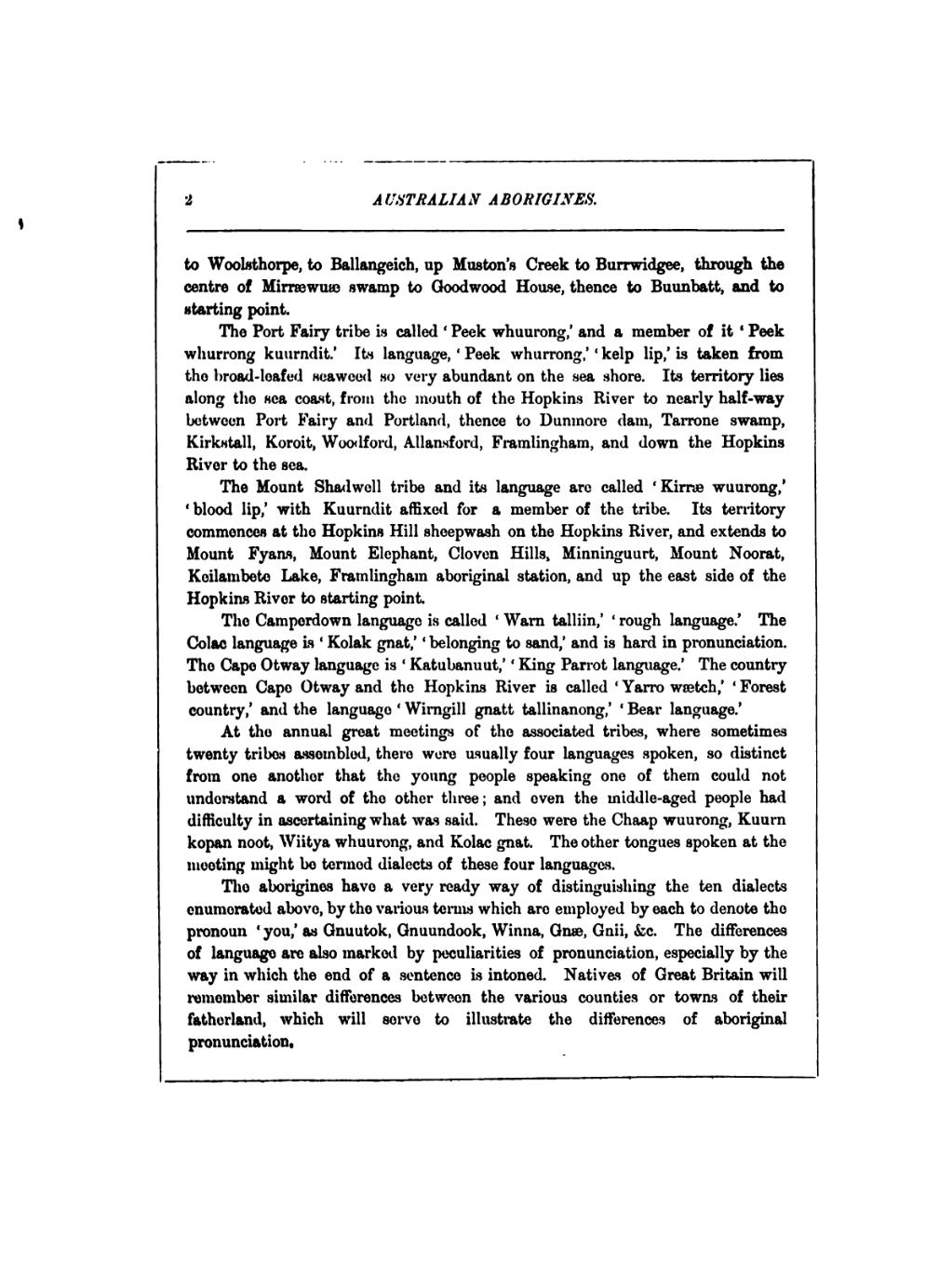to Woolsthorpe, to Ballangeich, up Muston's Creek to Burrwidgee, through the centre of Mirraswuto swamp to Goodwood House, thence to Buunbatt, and to starting point.
The Port Fairy tribe is called 'Peek whuurong,' and a member of it 'Peek whurrong kuurndit,' Its language, 'Peek whurrong,' 'kelp lip,' is taken from the broad-leafed seaweed so very abundant on the sea shore. Its territory lies along the sea coast, from the mouth of the Hopkins River to nearly half-way between Port Fairy and Portland, thence to Dunmore dam, Tarrone swamp, Kirkstall, Koroit, Woodford, Allansford, Framlingham, and down the Hopkins River to the sea.
The Mount Shadwell tribe and its language are called 'Kirae wuurong,' 'blood lip' with Kuurndit affixed for a member of the tribe. Its territory commences at the Hopkins Hill sheepwash on the Hopkins River, and extends to Mount Fyans, Mount Elephant, Cloven Hills, Minninguurt, Mount Noorat, Keilambete Lake, Framlingham aboriginal station, and up the east side of the Hopkins River to starting point.
The Camperdown language is called 'Warn talliin,' 'rough language.' The Colac language is 'Kolak gnat,' 'belonging to sand,' and is hard in pronunciation. The Cape Otway language is 'Katubanuut,' 'King Parrot language.' The country between Cape Otway and the Hopkins River is called 'Yarro waetch,' 'Forest country,' and the language 'Wirngill gnatt tallinanong,' 'Bear language.'
At the annual great meetings of the associated tribes, where sometimes twenty tribes assembled, there were usually four languages spoken, so distinct from one another that the young people speaking one of them could not understand a word of the other three; and even the middle-aged people had difficulty in ascertaining what was said. These were the Chaap wuurong, Kuurn kopan noot, Wiitya whuurong, and Kolac gnat. The other tongues spoken at the meeting might be termed dialects of these four languages.
The aborigines have a very ready way of distinguishing the ten dialects enumerated above, by the various terms which are employed by each to denote the pronoun 'you,' as Gnuutok, Gnuundook, Winna, Gnae, Gnii, &c. The differences of language are also marked by peculiarities of pronunciation, especially by the way in which the end of a sentence is intoned. Natives of Great Britain will remember similar differences between the various counties or towns of their fatherland, which will serve to illustrate the differences of aboriginal pronunciation.
